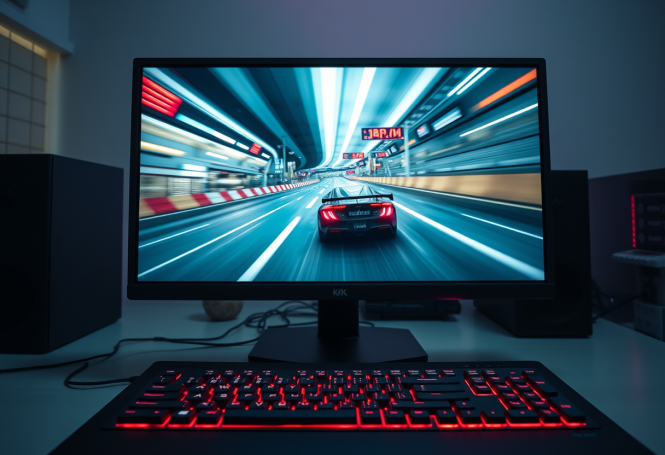 Fun time! Here’s how to boost your PC for gaming (basic tweaks)
Fun time! Here’s how to boost your PC for gaming (basic tweaks)
For most of us, playing games is sort of integral to owning a personal computer. Many do it casually, as a way to get the much-needed break from work/studies; some grow more serious about this activity and spend much of their time before the screen adventuring. Regardless of which cohort you belong to, this guide to optimizing your PC for gaming will help make the experience considerably more enjoyable.
Some of the tweaks and hacks suggested here are universal, some aren’t, but the latter actually cover a very wide range of PC configurations, so we decided to include them in this list, too. There will also be the second installment covering more advanced hacks, so stay tuned.
Enable Game Mode
This one is simple and obvious. Microsoft realizes very well that Windows-powered computers are used for fun more often than not, and the multibillion video game industry supports this realization splendidly. So they introduced the Game Mode feature in Windows 10 and 11, which is designed to optimize system resources by prioritizing CPU and GPU allocation to your games while depriving unnecessary background processes of the virtual juice. Oh, and it cuts out the annoying notifications, too.
How to enable Game Mode in Windows?
Push the Windows button, go to Settings, find the Gaming item in the list, and click the toggle to turn Game Mode on. Alternatively, you can hit the Windows button, start typing “game,” and the system will bring “Turn on Game Mode” to the list of suggestions.
Move games to SSD
Many modern computers, desktops and laptops alike, have both an SSD and a more traditional HDD on board, the former carrying the system and the latter being used as storage, typically being much more spacious. Games, not belonging to the category of software used routinely, usually end up on the HDD, too.
If you are playing some title at least once a day, consider moving it to the SSD. You’ll get:
- faster load times;
- smoother gameplay;
- better graphics.
Simply because an SSD works much faster than an HDD (read and write speeds around 3,500+ MB/s vs. 30-150 MB/s). An even better solution would be to move your games to an SSD that does not carry Windows so it dedicates its resources to them entirely.
Set the display to the highest refresh rate
For most light- and midcore gamers, a display is a secondary piece of hardware when it comes to playing. It shows the picture, and that’s enough. Hardcore gamers, on the other hand, realize the importance of this part of a gaming PC setup, and try to max it out as much as the graphics card and RAM. Why? Because, ultimately, the display shapes the overall experience as much as those two crucial components.
The simplest way to use the display in the matter of boosting your computer for gaming is to up its refresh rate to the maximum value. The refresh rate of a monitor is the number of times the screen updates per second, measured in Hertz (Hz); make it the highest possible to get:
- smoother gameplay and motion;
- reduced input lag;
- better target tracking and reaction;
- overall enhanced visual comfort.
This tweak largely depends on what your hardware is generally capable of. To fully utilize a high refresh rate, your GPU and CPU must be capable of generating enough frames per second to match or exceed the monitor’s refresh rate. For example, a 144Hz monitor requires the game to run at or near 144 FPS for the full effect. But don’t be discouraged if these figures are beyond your setup: the difference between what you have on the screen now, with mediocre 60 Hz, and after you move it up even to 75 Hz, can be quite noticeable. Go to Settings → Display → Advanced display, there is a drop down list there for refresh rate.
Turn on Auto HDR
This one is also about the visual part of gaming. HDR stands for “high dynamic range”; it is opposed to SDR, which means “standard dynamic range.” As the name suggests, “high” means you get more vibrant colors, better contrast, and details that make the picture totally lifelike — even in older non-HDR games!
HDR is another reason to pony up and get yourself a better monitor: this setting is only available for the displays that support it. Go to Settings → Display → HDR (Windows 11 only; yet another reason to upgrade from Windows 10), and you will instantly see if your games can shine like a diamond even in your current configuration: under the Display Capabilities section, Windows tells you if your screen can get brighter through tapping into the power of high dynamic range.
Performance-wise, auto HDR is surprisingly forgiving: if you have even an entry-level decent graphics card, the feature will just make your gaming life better without shifting the fans into higher (and annoying) gear.



